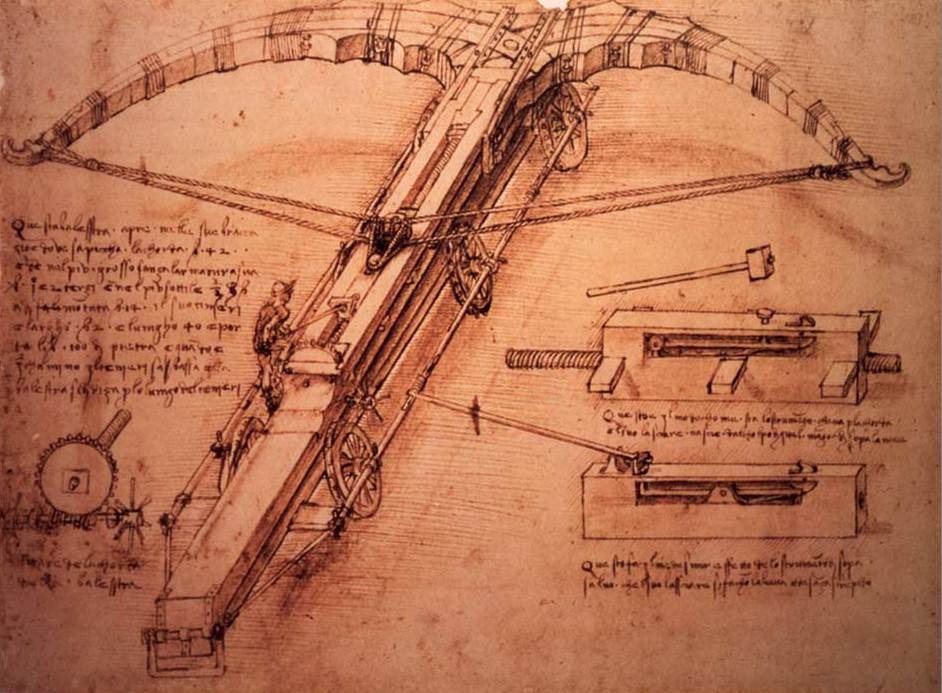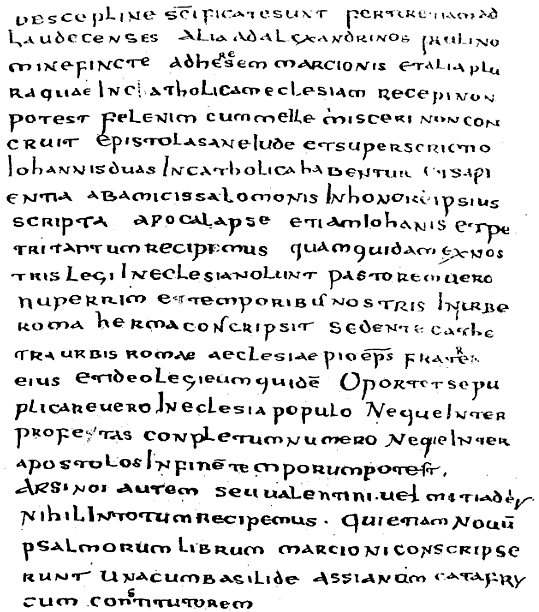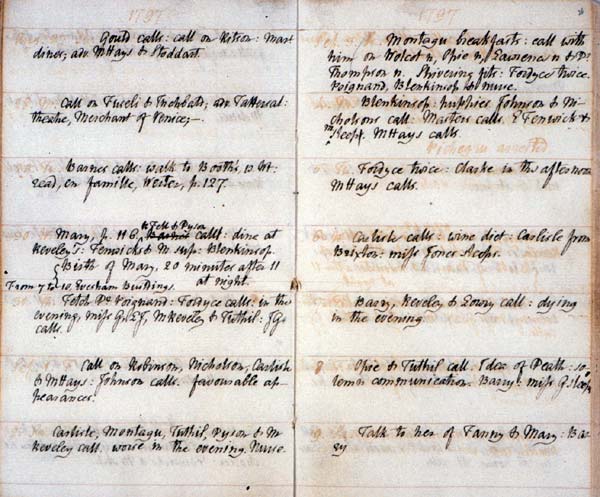|
Ambrosian Library
The Biblioteca Ambrosiana is a historic library in Milan, Italy, also housing the Pinacoteca Ambrosiana, the Ambrosian art gallery. Named after Ambrose, the patron saint of Milan, it was founded in 1609 by Cardinal Federico Borromeo, whose agents scoured Western Europe and even Greece and Syria for books and manuscripts. Some major acquisitions of complete libraries were the manuscripts of the Benedictine monastery of Bobbio (1606) and the library of the Paduan Vincenzo Pinelli, whose more than 800 manuscripts filled 70 cases when they were sent to Milan and included the famous '' Iliad'', the '' Ilias Picta''. History During Cardinal Borromeo's sojourns in Rome, 1585–95 and 1597–1601, he envisioned developing this library in Milan as one open to scholars and that would serve as a bulwark of Catholic scholarship in the service of the Counter-Reformation against the treatises issuing from Protestant presses. To house the cardinal's 15,000 manuscripts and twice that m ... [...More Info...] [...Related Items...] OR: [Wikipedia] [Google] [Baidu] |
Milan
Milan ( , , Lombard language, Lombard: ; it, Milano ) is a city in northern Italy, capital of Lombardy, and the List of cities in Italy, second-most populous city proper in Italy after Rome. The city proper has a population of about 1.4 million, while its Metropolitan City of Milan, metropolitan city has 3.26 million inhabitants. Its continuously built-up List of urban areas in the European Union, urban area (whose outer suburbs extend well beyond the boundaries of the administrative Metropolitan cities of Italy, metropolitan city and even stretch into the nearby country of Switzerland) is the fourth largest in the EU with 5.27 million inhabitants. According to national sources, the population within the wider Milan metropolitan area (also known as Greater Milan), is estimated between 8.2 million and 12.5 million making it by far the List of metropolitan areas of Italy, largest metropolitan area in Italy and List of metropolitan areas in Europe, one of ... [...More Info...] [...Related Items...] OR: [Wikipedia] [Google] [Baidu] |
Printing Press
A printing press is a mechanical device for applying pressure to an inked surface resting upon a print medium (such as paper or cloth), thereby transferring the ink. It marked a dramatic improvement on earlier printing methods in which the cloth, paper or other medium was brushed or rubbed repeatedly to achieve the transfer of ink, and accelerated the process. Typically used for texts, the invention and global spread of the printing press was one of the most influential events in the second millennium. In Germany, around 1440, goldsmith Johannes Gutenberg invented the movable-type printing press, which started the Printing Revolution. Modelled on the design of existing screw presses, a single Renaissance movable-type printing press could produce up to 3,600 pages per workday, compared to forty by hand-printing and a few by hand-copying. Gutenberg's newly devised hand mould made possible the precise and rapid creation of metal movable type in large quantities. His two ... [...More Info...] [...Related Items...] OR: [Wikipedia] [Google] [Baidu] |
De Divina Proportione
''Divina proportione'' (15th century Italian for ''Divine proportion''), later also called ''De divina proportione'' (converting the Italian title into a Latin one) is a book on mathematics written by Luca Pacioli and illustrated by Leonardo da Vinci, completed by February 9th, 1498 in Milan and first printed in 1509. Its subject was mathematical proportions (the title refers to the golden ratio) and their applications to geometry, to visual art through perspective, and to architecture. The clarity of the written material and Leonardo's excellent diagrams helped the book to achieve an impact beyond mathematical circles, popularizing contemporary geometric concepts and images. Some of its content was plagiarised from an earlier book by Piero della Francesca, ''De quinque corporibus regularibus''. Contents of the book The book consists of three separate manuscripts, which Pacioli worked on between 1496 and 1498. He credits Fibonacci as the main source for the mathematics he pr ... [...More Info...] [...Related Items...] OR: [Wikipedia] [Google] [Baidu] |
Biblical Canon
A biblical canon is a set of texts (also called "books") which a particular Jewish or Christian religious community regards as part of the Bible. The English word ''canon'' comes from the Greek , meaning "rule" or " measuring stick". The use of the word "canon" to refer to a set of religious scriptures was first used by David Ruhnken, in the 18th century. Various biblical canons have developed through debate and agreement on the part of the religious authorities of their respective faiths and denominations. Some books, such as the Jewish–Christian gospels, have been excluded from various canons altogether, but many disputed books are considered to be biblical apocrypha or deuterocanonical by many, while some denominations may consider them fully canonical. Differences exist between the Hebrew Bible and Christian biblical canons, although the majority of manuscripts are shared in common. Different religious groups include different books in their biblical canons, in v ... [...More Info...] [...Related Items...] OR: [Wikipedia] [Google] [Baidu] |
Muratorian Fragment
The Muratorian fragment, also known as the Muratorian Canon (Latin: ), is a copy of perhaps the oldest known list of most of the books of the New Testament. The fragment, consisting of 85 lines, is a 7th-century Latin manuscript bound in a 7th- or 8th-century codex from the library of Columbanus's monastery at Bobbio Abbey; it contains features suggesting it is a translation from a Greek original written about 170 or as late as the 4th century. Both the degraded condition of the manuscript and the poor Latin in which it was written have made it difficult to translate. The beginning of the fragment is missing, and it ends abruptly. The fragment consists of all that remains of a section of a list of all the works that were accepted as canonical by the churches known to its original compiler. During the time period of early Christianity, there was no accepted "New Testament", merely books considered of greater or lesser value. While likely not intended strictly as a canon list, the ... [...More Info...] [...Related Items...] OR: [Wikipedia] [Google] [Baidu] |
Mary Shelley
Mary Wollstonecraft Shelley (; ; 30 August 1797 – 1 February 1851) was an English novelist who wrote the Gothic novel '' Frankenstein; or, The Modern Prometheus'' (1818), which is considered an early example of science fiction. She also edited and promoted the works of her husband, the Romantic poet and philosopher Percy Bysshe Shelley. Her father was the political philosopher William Godwin and her mother was the philosopher and women's rights advocate Mary Wollstonecraft. Mary's mother died less than a fortnight after giving birth to her. She was raised by her father, who provided her with a rich if informal education, encouraging her to adhere to his own anarchist political theories. When she was four, her father married a neighbour, Mary Jane Clairmont, with whom Mary came to have a troubled relationship. In 1814, Mary began a romance with one of her father's political followers, Percy Bysshe Shelley, who was already married. Together with her stepsister, Claire ... [...More Info...] [...Related Items...] OR: [Wikipedia] [Google] [Baidu] |
Augusta Leigh
Augusta Maria Leigh (''née'' Byron; 26 January 1783 – 12 October 1851) was the only daughter of John "Mad Jack" Byron, the poet Lord Byron's father, by his first wife, Amelia, née Darcy (Lady Conyers in her own right and the divorced wife of Francis, Marquis of Carmarthen). Early life Augusta's mother died soon after her birth. Her grandmother, Lady Holderness, raised Augusta for a few years, but died when Augusta was still a young girl, and the child divided her time among relatives and friends. Marriage Augusta later married her cousin, Lt. Colonel George Leigh (1771–1850), son of General Charles Leigh (1748–1815) and his wife, Frances Byron, her paternal aunt. The couple had seven children: Georgiana Augusta, Augusta Charlotte, George Henry, Elizabeth Medora, Frederick George, Amelia Marianne, and Henry Francis. Richard Temple-Nugent-Brydges-Chandos-Grenville, 1st Duke of Buckingham and Chandos, noted the wedding with disdain in his diary: "Poor Augusta L ... [...More Info...] [...Related Items...] OR: [Wikipedia] [Google] [Baidu] |
John Nichol (biographer)
John Nichol (8 September 1833 – 11 October 1894), was a Scottish literary academic, and the first Regius Professor of English Language and Literature at the University of Glasgow. Early life Born in Montrose, Scotland, Nichol was the son of John Pringle Nichol, Regius Professor of Astronomy at the University of Glasgow. John Jr. studied first at Glasgow (1848–55) and then Balliol College, Oxford (1855–9) as a Snell Exhibitioner, graduating with a First-Class degree in Classics, Philosophy and Mathematics. After graduating, Nicholl remained at Oxford as a coach. With Albert Venn Dicey, Thomas Hill Green, Swinburne and others, he formed the Old Mortality Society for discussions on literary matters. Glasgow In 1862 he was made Regius Professor of English Literature at Glasgow. He had already made a reputation as an acute critic and a successful lecturer, and his influence at Glasgow was very marked. During his tenure as Regius Professor, he also lectured at Oxford Universi ... [...More Info...] [...Related Items...] OR: [Wikipedia] [Google] [Baidu] |
Pietro Bembo
Pietro Bembo, ( la, Petrus Bembus; 20 May 1470 – 18 January 1547) was an Italian scholar, poet, and literary theorist who also was a member of the Knights Hospitaller, and a cardinal of the Roman Catholic Church. As an intellectual of the Italian Renaissance (15th– 16th c.), Pietro Bembo greatly influenced the development of the Tuscan dialect as a literary language for poetry and prose, which, by later codification into a standard language, became the modern Italian language. In the 16th century, Bembo's poetry, essays and books proved basic to reviving interest in the literary works of Petrarch. In the field of music, Bembo's literary writing techniques helped composers develop the techniques of musical composition that made the madrigal the most important secular music of 16th-century Italy. Life Pietro Bembo was born on 20 May 1470 to an aristocratic Venetian family. His father Bernardo Bembo (1433–1519) was a diplomat and statesman and a cultured man who ... [...More Info...] [...Related Items...] OR: [Wikipedia] [Google] [Baidu] |
Lucrezia Borgia
Lucrezia Borgia (; ca-valencia, Lucrècia Borja, links=no ; 18 April 1480 – 24 June 1519) was a Spanish-Italian noblewoman of the House of Borgia who was the daughter of Pope Alexander VI and Vannozza dei Cattanei. She reigned as the Governor of Spoleto, a position usually held by cardinals, in her own right. Her family arranged several marriages for her that advanced their own political position including Giovanni Sforza, Lord of Pesaro and Gradara, Count of Cotignola; Alfonso of Aragon, Duke of Bisceglie and Prince of Salerno; and Alfonso I d'Este, Duke of Ferrara. Tradition has it that Alfonso of Aragon was an illegitimate son of the King of Naples and that her brother Cesare Borgia may have had him murdered after his political value waned. Rumors about her and her family cast Lucrezia as a '' femme fatale'', a role in which she has been portrayed in many artworks, novels and films. Early life Lucrezia Borgia was born on 18 April 1480 at Subiaco, near Rome. Her ... [...More Info...] [...Related Items...] OR: [Wikipedia] [Google] [Baidu] |
Lord Byron
George Gordon Byron, 6th Baron Byron (22 January 1788 – 19 April 1824), known simply as Lord Byron, was an English romantic poet and Peerage of the United Kingdom, peer. He was one of the leading figures of the Romantic movement, and has been regarded as among the greatest of English poets. Among his best-known works are the lengthy Narrative poem, narratives ''Don Juan (poem), Don Juan'' and ''Childe Harold's Pilgrimage''; many of his shorter lyrics in ''Hebrew Melodies'' also became popular. Byron was educated at Trinity College, Cambridge, later traveling extensively across Europe to places such as Italy, where he lived for seven years in Venice, Ravenna, and Pisa after he was forced to flee England due to lynching threats. During his stay in Italy, he frequently visited his friend and fellow poet Percy Bysshe Shelley. Later in life Byron joined the Greek War of Independence fighting the Ottoman Empire and died leading a campaign during that war, for which Greeks rev ... [...More Info...] [...Related Items...] OR: [Wikipedia] [Google] [Baidu] |
Leonardo Da Vinci - Portrait Of A Musician - Pinacoteca Ambrosiana
Leonardo is a masculine given name, the Italian, Spanish, and Portuguese equivalent of the English, German, and Dutch name, Leonard. People Notable people with the name include: * Leonardo da Vinci (1452–1519), Italian Renaissance scientist, inventor, engineer, sculptor, and painter Artists * Leonardo Schulz Cardoso, Brazilian singer * Emival Eterno da Costa (born 1963), Brazilian singer known as Leonardo * Leonardo de Mango (1843–1930), Italian-born Turkish painter * Leonardo DiCaprio (born 1974), American actor * Leonardo Pieraccioni (born 1965), Italian actor and director Athletes * Leonardo Araújo (born 1969), usually known as Leonardo, Brazilian World Cup-winning footballer, and former sporting director of Paris Saint Germain * Leonardo Fioravanti (born 1997), Italian surfer * Leonardo Lourenço Bastos (born 1975), Brazilian footballer * Leonardo Bittencourt, German footballer * Leonardo Bonucci (born 1987), Italian footballer * Leonardo Candi (born 1997), It ... [...More Info...] [...Related Items...] OR: [Wikipedia] [Google] [Baidu] |









